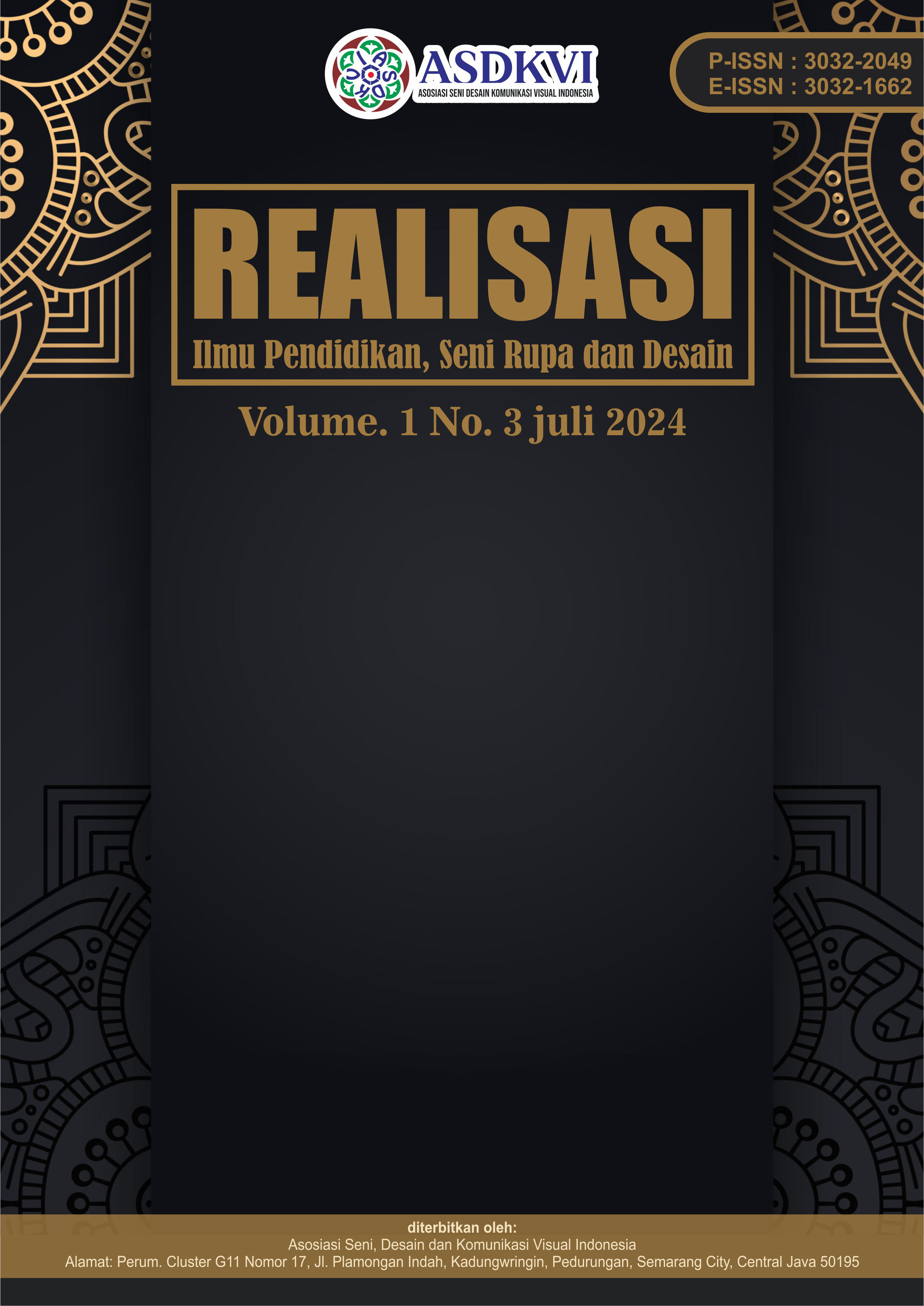Kajian Nilai-Nilai Kearifan Lokal Dalam Garapan Tari Kreasi “Babuai Kain”
DOI:
https://doi.org/10.62383/realisasi.v1i3.205Keywords:
Local Wisdom, Creative Dance, Babuai KainAbstract
This research aims to find out the value of Local Wisdom in the work of the Babuai Kain Dance at Sanggar Sikambang Group. This type of research is qualitative research with a descriptive method. The research instrument is the researcher himself and is assisted by supporting instruments and assisted by stationery and mobile phone supporting instruments. The data of this study uses primary data and secondary data. Data was collected through literature studies, observations, interviews, documentation. The steps to analyze data are data collection, data reduction, data presentation and conclusion drawn. The results of the study show that the value of local wisdom in the performance and work of the Babuai Kain Dance in Kenagarian Kambang Barat consists of moral values, mutual cooperation values, social values, ethical values, religious values, aesthetic values and beauty. The moral value in the Babuai Kain dance can distinguish between good and bad in individual relationships and to the community who will meononon the dance performance. The value of Gotong is the result of the Babuai Kain dance being deliberated together. The social value is that during the dance performance, the enthusiasm of the community in watching this Babuai Kain dance. The ethical value is that before carrying out an activity, be it a rehearsal or a performance of the Babuai Kain dance, first ask permission from the ninik mamak and other village leaders. The value of religion is in its appearance starting after the dhuhur prayer or after rest, prayer, eating (Ishoma). The aesthetic value and beauty are seen in the dance movements, costumes, props and dance accompaniment.
References
Ardiansah. (2014). Proses koreografi Tari Blakasuta. Jurnal Seni Tari, 3(1), 2014.
Astuti, F. (2016). Menumbuhkan nilai-nilai kearifan lokal melalui karya tari koreografer perempuan di Sumatera Barat: Suatu tinjauan gender. Humanus: Jurnal Ilmiah Ilmu-ilmu Humaniora, 15(1), 53-60.
Fahmiati, M., & Iraqi, H. S. (2023). Reposisi penciptaan Tari Minangkabau baru: Media hiburan dan pelestarian kearifan lokal. Jurnal Sendratasik, 12(1), 125-134.
Indrayuda. (2012). Eksistensi Tari Minangkabau. Padang: UNP Press.
Murgiyanto, Sal. (1983). Seni Menata Tari. Jakarta: Dewan Kesenian.
Nerosti. (2019). Nilai-nilai kearifan lokal melalui Tari Galombang Gaya Sasaran: Studi Sasaran sebagai sarana pendidikan kulturan. Jurnal Tari, Teater, dan Wayang, 2, 35-41.
Sedyawati, Edy. (2006). Budaya Indonesia, Kajian Arkeologi, Seni, dan Sejarah. Jakarta: Raja Grafindo Persada.
Soedarsono. (1984). The State Ritual Dance Drama in The Court of Yogyakarta. Yogyakarta: Universitas Gaja Mada Press.
Sudarsono, F. X. (1997). Pedoman Pelaksanaan Penelitian Tindakan Kelas Buku II. Yogyakarta: IKIP Yogyakarta.
Supiyah, H., & Susanti, L. R. (2018). Menggali nilai kearifan lokal suku Besemah melalui kebudayaan guritan. Criksetra: Jurnal Pendidikan Sejarah, 7(2), 46-59.
Susmiarti. (2009). Fenomena karya Tari Mahasiswa Sendratasik FBSS UNP. Padang: FBSS UNP.
Downloads
Published
How to Cite
Issue
Section
License
Copyright (c) 2024 Realisasi : Ilmu Pendidikan, Seni Rupa dan Desain

This work is licensed under a Creative Commons Attribution-ShareAlike 4.0 International License.





